Dmitry Ivanovich, the Shadow Prince

The first life of Dmitry Ivanovich, future Tsar of all Russia, began on the 19th October 1582 and ended on the 15th May 1591. He was the son of Ivan the Terrible, the greatest of all Russia’s Tsars and the first to take onto himself absolute power. His mother was the Tsar’s seventh wife, Maria Nagaya. Orthodox Church law permitted only three marriages, and so in the eyes of the Church, if not the state, Dmitry was illegitimate. Despite that, his name held some significance – it was that of Ivan’s eldest son, who had been born thirty years earlier and not survived a year. Dmitry’s dubious legal standing as a possible heir may have helped to shield him when his father died in 1584. His elder brother Feodor, who was 17, inherited the throne. Feodor had only become the heir three years earlier when Tsar Ivan, in a fit of rage, had struck his eldest surviving son and killed him. Feodor was a weak man, who suffered definite physical and possibly some mental disability. He was uninterested in ruling Russia, and most of the power in the realm fell into the hands of his brother in law, Boris Gudonov.
Though he had no legal claim on the throne, Dmitry was still the only other surviving son of Ivan. Fearing he would become a focus of rebellion, Boris exiled him and his mother to Uglich, a forted town on the Volga river two hundred miles north of Moscow. There Dmitry, Maria and her brothers lived in obscurity until the morning of May 15th, 1591 when the young prince was found dead in the castle courtyard. He had a knife in his hand, and his throat had been slit. Immediately rumours and accusations of assassination began to circulate. Maria openly accused Boris Gudonov of sending agents to remove Dmitry as a potential threat. These accusations stirred up a riot, and several supposed assassins, including a child who Dmitry had played with, were lynched. Boris, for his part, opened an official investigation. It ruled that Dmitry had died through misadventure – that he had suffered an epileptic seizure while holding a knife. Based on these findings, Maria and her brothers were found guilty of negligence. The brothers were imprisoned, while Maria was forced into holy orders and confined to a nunnery. The truth of how and why Dmitry died is impossible to determine today. But if Boris did kill Dmitry in order to eliminate him as a threat to his power, he failed.
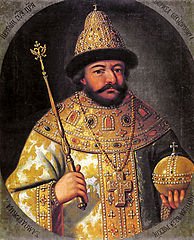
In 1598 Fedor died childless, throwing the succession open. Boris had made enough enemies during his time as the power behind the throne that he knew there was only one option available to him – step out of the shadows, and become Tsar. This he did, persuading the National Assembly that he was the only man caable of holding the country together. He was not, however, and the ensuing period became known as the Time of Troubles in Russian history. At the time, Boris’ primary concern was in securing Russian access to the Baltic sea, which the recent Russo-Swedish War had proven was a key tactical advantage they needed. This led to conflict with Poland, which was at the time at the height of its power in Europe. Boris was unfortunate, as a few years after he took the throne there was a severe famine in Russia, leading to widescale civil unrest. As this unrest hit its peak in 1603, news reached Boris from Poland. Dmitry Ivanovich had returned to claim his throne.
The man known to history as “Pseudo-Demetrius” first appeared in Moscow in 1600 or 1601, claiming to be the lost heir to Ivan’s Rurik dynasty. The Russian Patriarch met him at this time, and was impressed with his attitude and bearing. Naturally Boris also wished to meet this young man, and Dmitry fled the city ahead of the Imperial agents. By his account this was not the first time he had fled Boris’ agents, for he said that his mother had learned of Boris’ plans and smuggled him out of the city in the care of a doctor she trusted. Boris, for his part, claimed that “Pseudo-Demetrius” was Grigory Bogdanovich Otrepyev, a sometime monk and associate of the Romanov family. Ivan the Terrible’s first wife had been a Romanov, and they had become one of Moscow’s most powerful families. When Boris took the throne, it was as much to protect himself from the Romanovs as anything, and so he exiled them from the city. It was natural that he linked this new threat to his long-time enemies. With the Tsar nipping at his heels, Dmitry fled to Poland, where he began making plans for war.
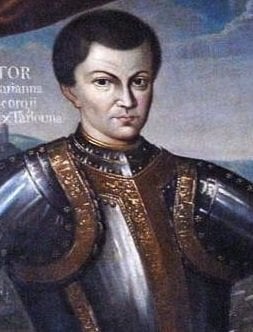
Dmitry was made very welcome in Poland – so welcome that some rumours began to circulate that he was actually an illegitimate son of the previous Polish king, Stephen Báthory. [1] Officially however, he was acknowledged as Dmitry Ivanovich – a good pretext, at least, for a large number of Polish nobles to pledge him military support. In order to win the support of the Jesuit order and their allies, Dmitry converted to Catholicism, which was enough to bring the Papacy on his side as they considered the Orthodox Christianity of Russia as heretical. He also became engaged to a Polish noblewoman, Marina Mniszech, which gave him access to her family’s connections and support. In 1603, at the head of a small (and not officially endorsed) Polish-Lithuanian army, Dmitry invaded Russia. At first, things went surprisingly well. Tsar Boris had little support, and many saw Dmitry as a potential saviour from his tyranny. The southern Cossack tribes joined his army, and they won several victories against Boris’ forces. Losses the following year, however, soon exposed just how weak the alliance Dmitry had forged was, and his armies were on the verge of turning on him when word reached them that Boris Gudonov was dead.
With Boris’ death his son Feodor took over power. Boris had known he was dying and done his best to ensure that Feodor had the support he needed to retain power, but it was not enough. Heartened by the news, Dmitry’s troops rallied and he marched on Moscow. Army divisions began to defect en masse, and by the time his envoys arrived in the city it was clear that the war was lost. Feodor and his mother were murdered in their apartments by nobles unwilling to resist Dmitry’s advance. Feodor’s sister Xenia, a noted beauty, survived the coup only to be raped by Dmitry and held as a prisoner for five months before he tired of her and exiled her to a nunnery. The real Dmitry’s mother was released from the nunnery where she had been imprisoned, and she confirmed that this was truly her son (though she would later admit to having lied out of self-preservation). On 21st July 1605 Dmitry was crowned as Tsar of all Russia.
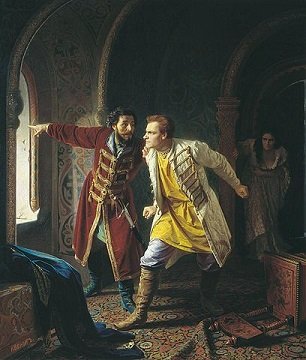
Among Dmitry’s first actions was to rescind the exile orders Boris had placed on several of Russia’s most influential families, such as the Romanov and Shuisky families. This attempt to provide himself with a base for support would prove to be a grave tactical error, as among them was Prince Vasili Shuisky. Vasili had been the one who investigated the real Dmitry’s death fifteen years earlier, and being well aware that the False Dmitry was an impostor he had no compunction in plotting against him. When Dmitry was married to Marina, he had his chance. Traditionally she should have converted to the Russian Orthodox faith, but instead she kept her Catholic religion – as did Dmitry. Vasili was easily able to stir this up into a fever of religious revolt, convincing the public that Dmitry was about to forcibly impose Catholicism upon them. In the ensuing riots hundred of Poles and other foreigners were massacred. Dmitry tried to flee the city, but while escaping out of an upstairs window of the Kremlin he slipped and fell to the ground, breaking his leg. While he lay in agony one of the pursuers caught up to him, and shot him dead on the spot. The body was put on public display, then cremated and, according to legend, the ashes were fired from a cannon in the direction of Poland. So ended the second life of Dmitry Ivanovich.
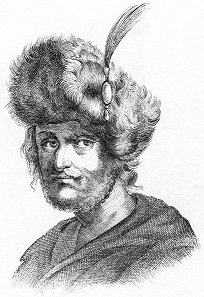
Vasili was immediately crowned Tsar. Marina was forced to renounce her title as Tsarina and then sent back to Poland, where she joined her father who had been exiled in disgrace from the court for his part in the debacle. Jerzy Mniszech was down but not out, however, and soon with his daughter produced a third Dmitry Ivanovich. In July 1607 the man known as False Dmitry II appeared. Marina recognised him as her husband, who had clearly managed to escape Moscow after all. With the support of disenfranchised Polish nobles he gathered together an army, roughly twice the size of that raised by the previous Dmitry, and invaded Russia. Many did not regard Vasili as a legitimate claimant to the throne, and Dmitry’s promises to confiscate the lands held by the nobility and redistribute them brought most of the peasantry over to his side. Vasili was forced to ally with Sweden to reinforce his position, which in turn led Poland to officially invade. While this sealed Vasili’s fate, and he was deposed by his nobles in 1610, it also destroyed Dmitry’s chance of taking the throne. The Poles conspired to place one of their king’s sons, Vladislav, on the throne. Dmitry was sidelined and forced to flee disguised as a peasant, though he soon reappeared with Marina by his side and rallied the peasantry and the southern Cossacks to his side once more. Most of southeastern Russia was soon under his control, but he made the mistake of allowing his bodyguard to include a man he had once ordered flogged. On the 10th December 1610 a Tatar prince named Peter Urusov, while riding alongside his sleigh in the countryside, shot him with a pistol and then cut off his head with a saber before fleeing.
Of course, that was not the end of the Dimitriads, as these wars became known. A third Dmitry appeared in 1611, raised up by the still-rebellious Cossacks. He accomplished little in his brief grab for power before being captured by the Russian authorities and discreetly executed. Marina, the former Tsarina, gave birth to False Dmitry II’s son Ivan a month after Dmitry’s death. She tried to keep Dmitry’s armies united behind this new figurehead, but when Vladislav was deposed in 1613 and replaced by Michael Romanov her support evaporated and she fled. Eventually she was captured by the Cossacks and handed over to the Tsar. Her three year old son was immediately executed, while she was imprisoned and soon died. And that was the end of the Dimitriads.
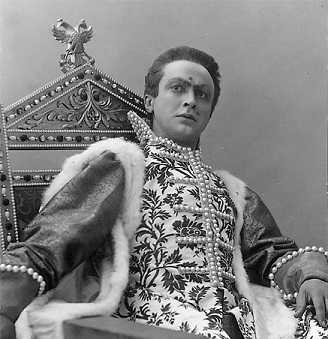
Under the new Romanov dynasty the messy history of Dmitry Ivanovich soon became officially determined fact. In order to affirm that the true Dmitry had died in Uglich at the hands of assassins (a conclusion still debated today by historians) a church was erected in the city, and the dead young prince became an official Saint of the Orthodox Church. The later Dmitry impersonators were officially demonised, with the first being portrayed in literature as a tool of the Catholic Church and the second as a murderous adventurer. Of course, history is written by the victor. If Dmitry had held onto the throne, even now scholars would doubtless be fiercely debating whether he was the true heir or not, with officialdom clearly on the side of Tsar Dmitry. Who are we to declare that the history we accept now is any more true?
Images via wikimedia.
[1] Uncle of Elizabeth Báthory.
